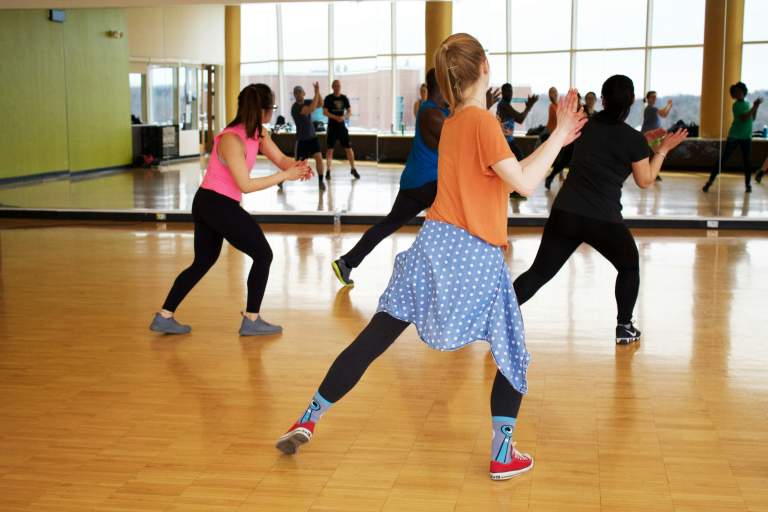Did You Know?

Exercises That Increase Bone Density Part 3
Posted May 1, 2025
Some exercises have mixed results when it comes to bone density. Here’s a look at these more controversial options.
The following exercises and interventions have mixed or controversial findings related to bone density. While some show promise, their effects are still being researched or have limited success in specific populations.
Whole Body Vibration
Some studies suggest a small increase in bone density from whole body vibration in post-menopausal women, while others show no benefit in pre-menopausal women. Findings are mixed and often vary depending on the specific site of bone measurement.
Heel Drops
Heel drops (50 per day) can increase bone density in pre-menopausal women. This simple exercise can be done in smaller sets (25 twice a day or 10 five times a day) and has been shown to improve bone density by 3-4% per year. However, post-menopausal women do not see the same benefit.
Multicomponent Training
A combination of exercises—such as aerobics, strengthening, progressive resistance training, balancing, and dancing—can significantly improve bone density at the femoral neck, hip greater trochanter, and especially at the spine. For best results, sessions should last 30 to 60 minutes, at least three times per week for a minimum of 10 months.
While these exercises show promise for improving bone density, the results can vary, particularly across different populations. Whole body vibration and heel drops have proven beneficial for some, while multicomponent training remains a valuable strategy for overall bone health.
Have questions? Call our office for a consultation (716) 247-5320.
References
Whole Body Vibration
- Gómez-Cabello A, Ara I, González-Agüero A, Casajús JA, Vicente-Rodríguez G. Effects of training on bone mass in older adults: a systematic review. Sports Med. 2012;1;42(4):301-25.
- Nikander R, Sievänen H, Heinonen A, Daly RM, Uusi-Rasi K, Kannus P. Targeted exercise against osteoporosis: A systematic review and meta-analysis for optimising bone strength throughout life. BMC Med. 2010 Jul 21;8:47.
- Ma C, Liu A, Sun M, Zhu H, Wu H.Effect of whole-body vibration on reduction of bone loss and fall prevention in postmenopausal women: a meta-analysis and systematic review. J Orthop Surg Res. 2016; 17;11:24.
- Merriman H, Jackson K. The effects of whole-body vibration training in aging adults: a systematic review. J Geriatr Phys Ther. 2009;32(3):134-45.
- Fratini A, Bonci T, Bull AM. Whole Body Vibration Treatments in Postmenopausal Women Can Improve Bone Mineral Density: Results of a Stimulus Focused Meta-Analysis. PLoS One. 2016;11(12):e0166774.
- Jepsen DB, Thomsen K, Hansen S, Jørgensen NR, Masud T, Ryg J. Effect of whole-body vibration exercise in preventing falls and fractures: a systematic review and meta-analysis. BMJ Open. 2017; 29;7(12):e018342.
Heel Drops
- Bassey, E.J. and Ramsdale, S.J., 1995. Weight-bearing exercise and ground reaction forces: a 12-month randomized controlled trial of effects on bone mineral density in healthy postmenopausal women. Bone, 16(4), pp.469-476.
- Ryan, C.M.C., Clissold, T.L. and Winwood, P.W., 2021. The Osteogenic Quantification and Reliability of the Heel Drop and Press up Drop. International Journal of Science Technology and Society, 9(6), p.294.
Multicomponent Training
- Howe T. E., Shea B., Dawson L. J., Downie F., Murray A., Ross C., Harbour R. T., Caldwell L. M., and Creed G., Exercise for preventing and treating osteoporosis in postmenopausal women, Cochrane Database of Systematic Reviews. (2011) 2011, no. 7, 1–167.
- de Kam D., Smulders E., Weerdesteyn V., and Smits-Engelsman B. C. M., Exercise interventions to reduce fall-related fractures and their risk factors in individuals with low bone density: a systematic review of randomized controlled trials, Osteoporosis International. (2009) 20, no. 12, 2111–2125.
- Martyn-St James M. and Carroll S., A meta-analysis of impact exercise on postmenopausal bone loss: the case for mixed loading exercise programmes, British Journal of Sports Medicine. (2009) 43, no. 12, 898–908.
- Varahra A., Rodrigues I. B., MacDermid J. C., Bryant D., and Birmingham T., Exercise to improve functional outcomes in persons with osteoporosis: a systematic review and meta-analysis, Osteoporosis International. (2018) 29, no. 2, 265–286.
- James M. M.-S. and Carroll S., Effects of different impact exercise modalities on bone mineral density in premenopausal women: A meta-analysis, Journal of Bone and Mineral Metabolism. (2010) 28, no. 3, 251–267.
- Daly R. M., Exercise and nutritional approaches to prevent frail bones, falls and fractures: an update, Climacteric. (2017) 20, no. 2, 119–124.
- Beck B. R., Daly R. M., Singh M. A. F., and Taaffe D. R., Exercise and Sports Science Australia (ESSA) position statement on exercise prescription for the prevention and management of osteoporosis, Journal of Science and Medicine in Sport. (2017) 20, no. 5, 438–445.
- Harding A. and Beck B., Exercise, osteoporosis, and bone geometry, Sports. (2017) 5, no. 2.
- Schmitt N. M., Schmitt J., and Dören M., The role of physical activity in the prevention of osteoporosis in postmenopausal women-An update, Maturitas. (2009) 63, no. 1, 34–38.
- Zhao R., Zhao M., and Xu Z., The effects of differing resistance training modes on the preservation of bone mineral density in postmenopausal women: a meta-analysis, Osteoporosis International. (2015) 26, no. 5, 1605–1618.
- Xu J., Lombardi G., Jiao W., and Banfi G., Effects of Exercise on Bone Status in Female Subjects, from Young Girls to Postmenopausal Women: An Overview of Systematic Reviews and Meta-Analyses, Sports Medicine. (2016) 46, no. 8, 1165–1182.
- Marques E. A., Mota J., Machado L., Sousa F., Coelho M., Moreira P., and Carvalho J., Multicomponent training program with weight-bearing exercises elicits favorable bone density, muscle strength, and balance adaptations in older women, Calcified Tissue International. (2011) 88, no. 2, 117–129.
- Marques E. A., Mota J., and Carvalho J., Exercise effects on bone mineral density in older adults: a meta-analysis of randomized controlled trials, AGE. (2011) 34, no. 6, 1493–1515.